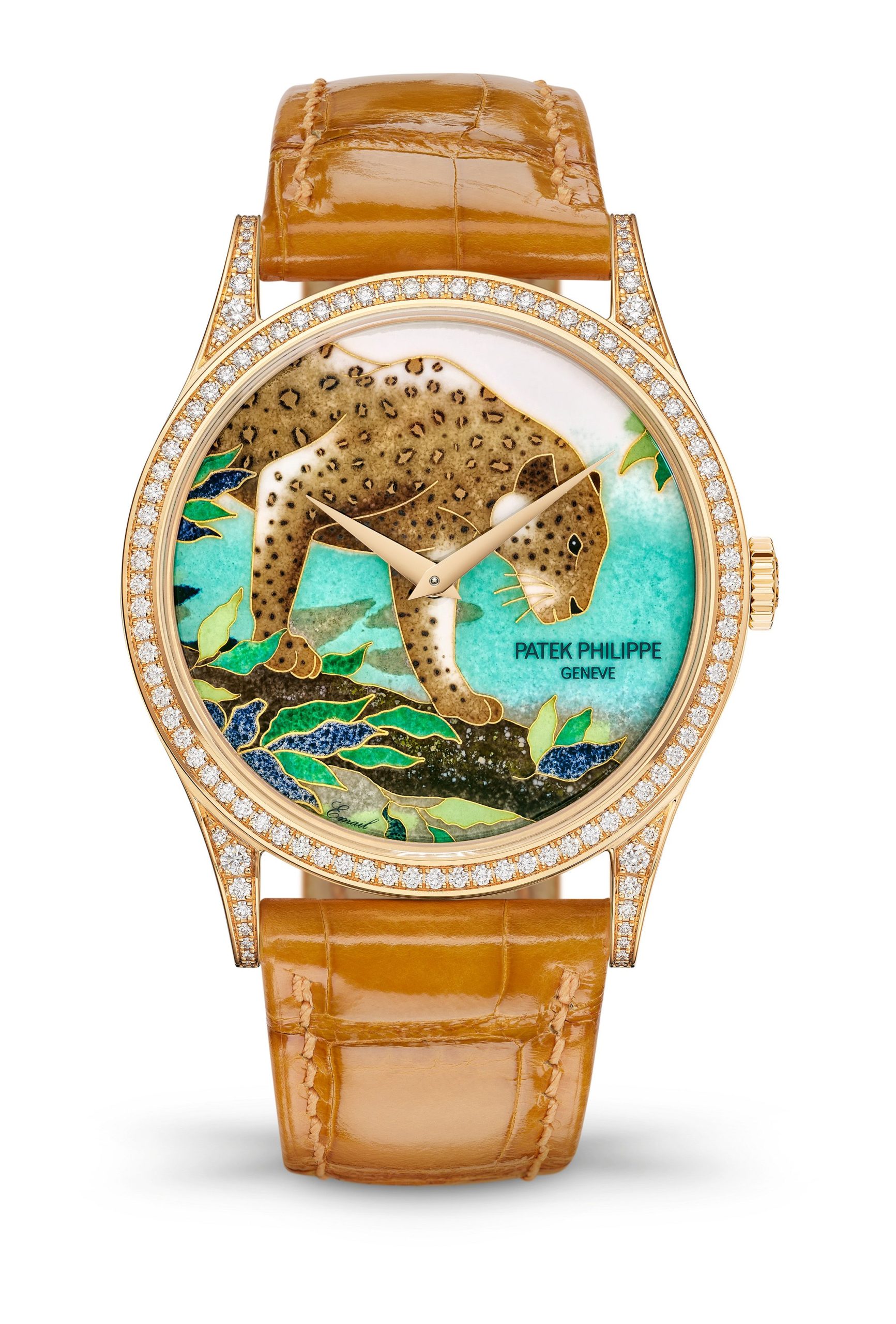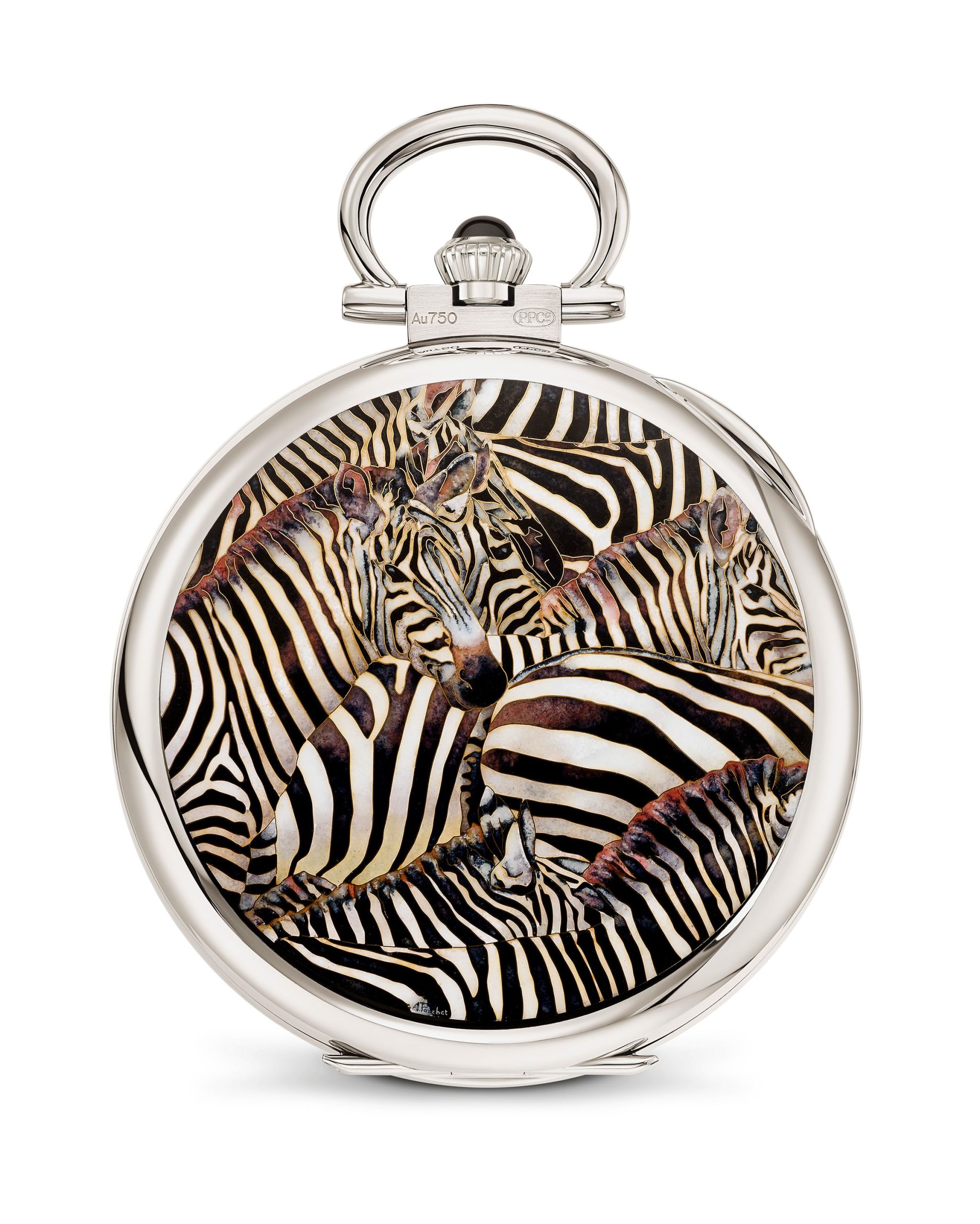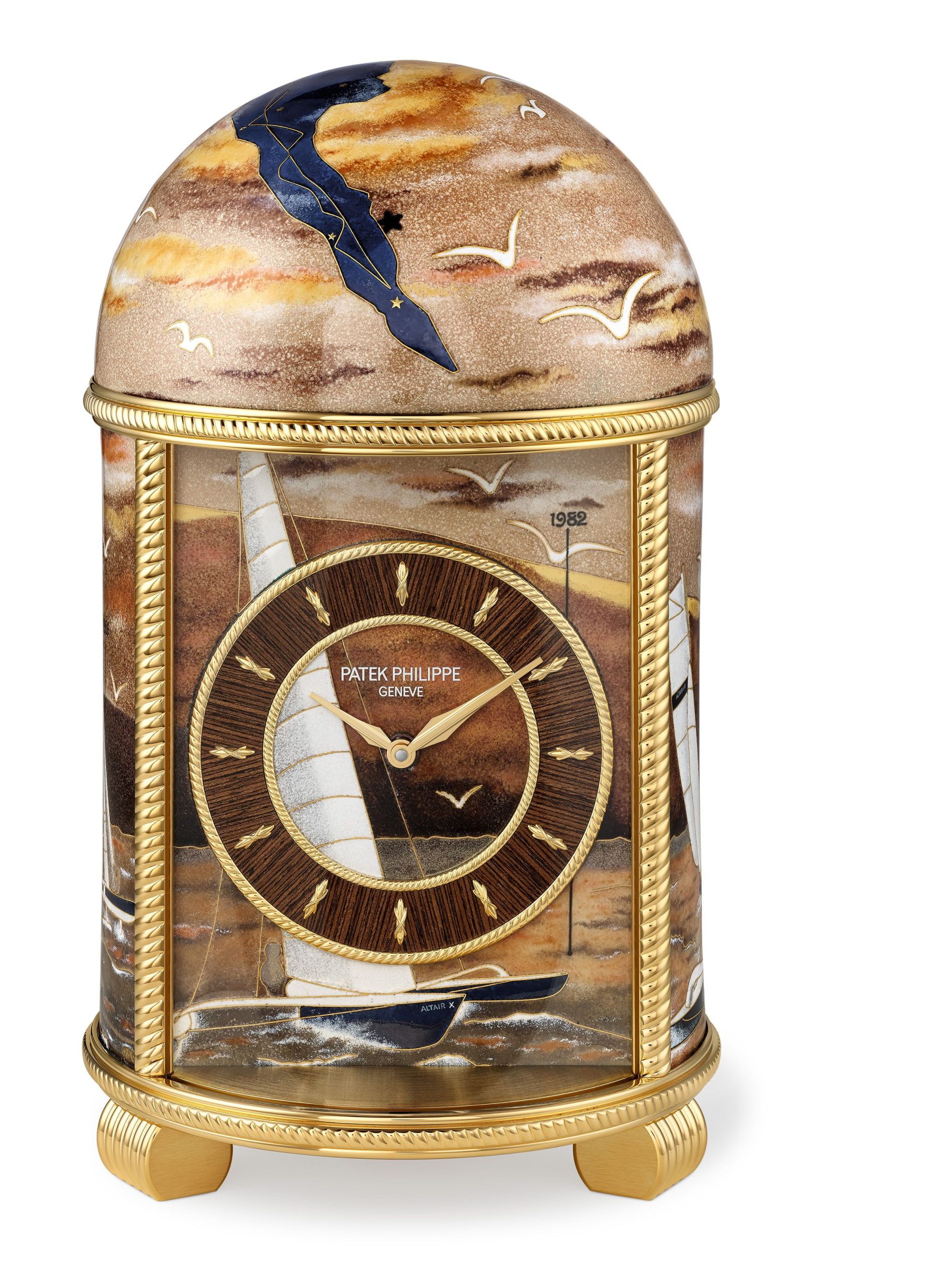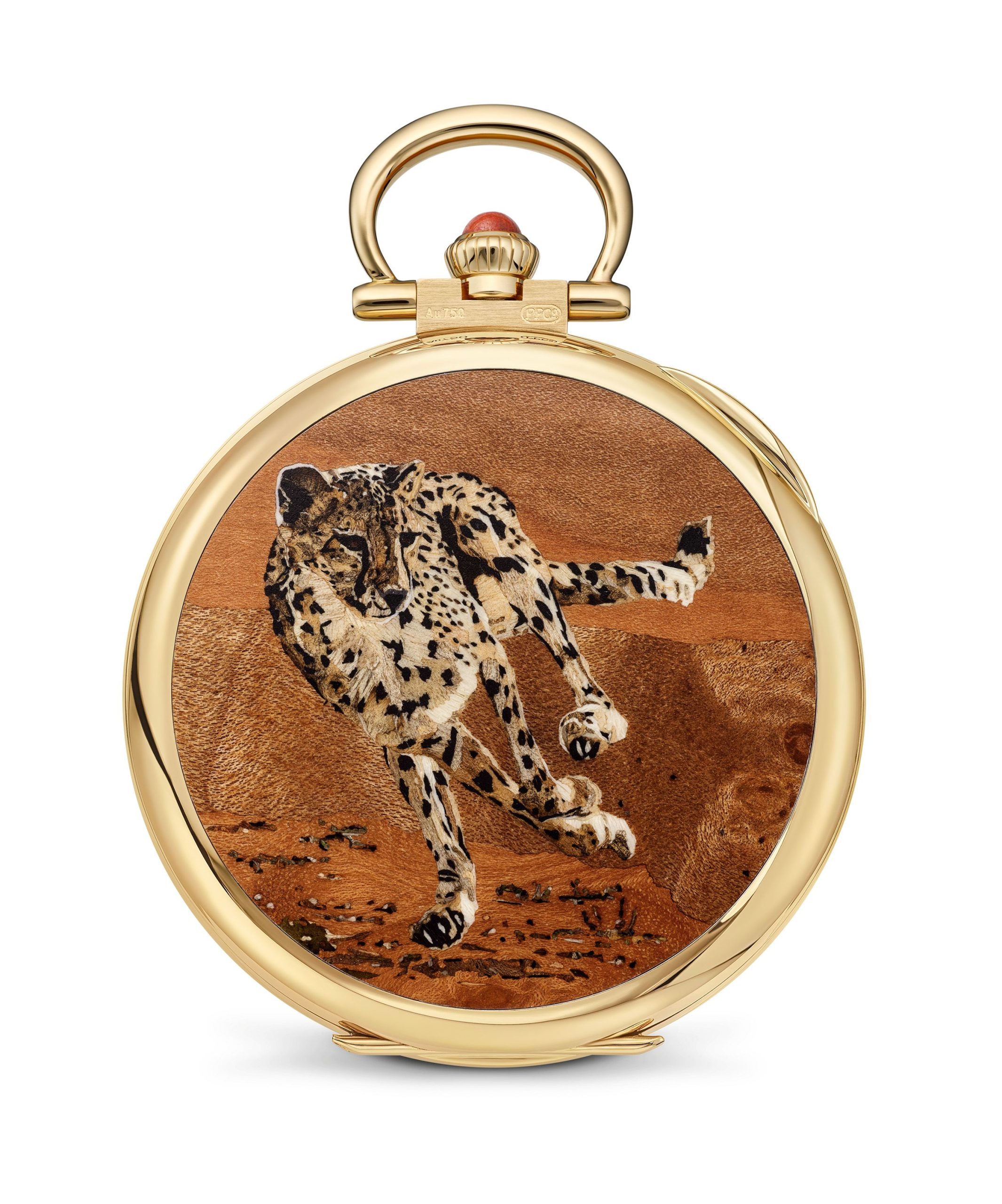
Patek Philippe Rare Handcrafts
Coming up soon: a very special, albeit short, opportunity to view some of the most breathtaking timepieces ever made. Patek Philippe has been busy redesigning the interior of a special gallery on Rue du Faubourg Saint-Honoré in Paris to accommodate the public exhibit of its Rare Handcrafts – watches and clocks that feature meticulous artistic dials that are created using a host of arts from miniature painting to marquetry and more. The exhibit, which was first opened in Geneva in April, runs from May 14-22, and is one of the most immersive experiences into fine wearable works of art.

Patek Philippe Rare Handcrafts, zebras pocket watch
Just walking into this historic building, with its beautiful architecture, stunning chandeliers and amazing accoutrements, is a treat. But going upstairs to the exhibit reminds visitors that watchmaking is more than what goes inside the timepiece – even when the mechanical movements are highly complex and intricate.
With artisans there to demonstrate their work, Patek Philippe’s Rare Handcrafts exhibit is all encompassing. From room to room, visitors can enjoy nearly 60 individual wristwatches, pocket watches and dome clocks that are decorated using an array of visual techniques. Highlights include a series of pieces inspired by the vibrant colors and musical night life of Cuba, and a smartly grouped collection of watches and clocks that bring nature at its finest to life. From lions, to zebras, panthers, elephants and rhinoceros to the tropical geckos, monkeys, birds and flowers, nature has never looked so good.

Patek Philippe Rare Handcrafts Dome clock with sailboat regatta theme.
There are even several pieces dedicated to Patek Philippe’s home city of Geneva. These include a pocket watch with a swan on it, inspired by the birds of the lake, and created using a special marquetry technique and more than 220 pieces of wood. There is even a dome table clock with a sailboat-on-the-lake theme inspired by the regatta win of the brand’s honorary president Philippe Stern on Lake Geneva. That clock is made in enamel with nearly 40 feet of yellow-gold wire to create the cells for the painting. More than 60 colors combine to create the opaque, translucent and opalescent hues.
It is difficult to imagine the painstaking, time-consuming work that went into each of these artisanal masterpieces. Patek Philippe is committed to preserving the skills of these artists, many of which have learned their trade from generation to generation over the past 500 years.

The Patek Philippe Rare Handcrafts exhibit in Paris opens on May 14, 2022.
To this day, the brand creates new clocks and watches annually that underscore these arts, including grand feu cloisonné enamel, paillone enamel, miniature painting on enamel, engraving, hand guilloche, marquetry and other techniques.
(Portions of this article by Roberta Naas first appeared on Forbes.com.)





